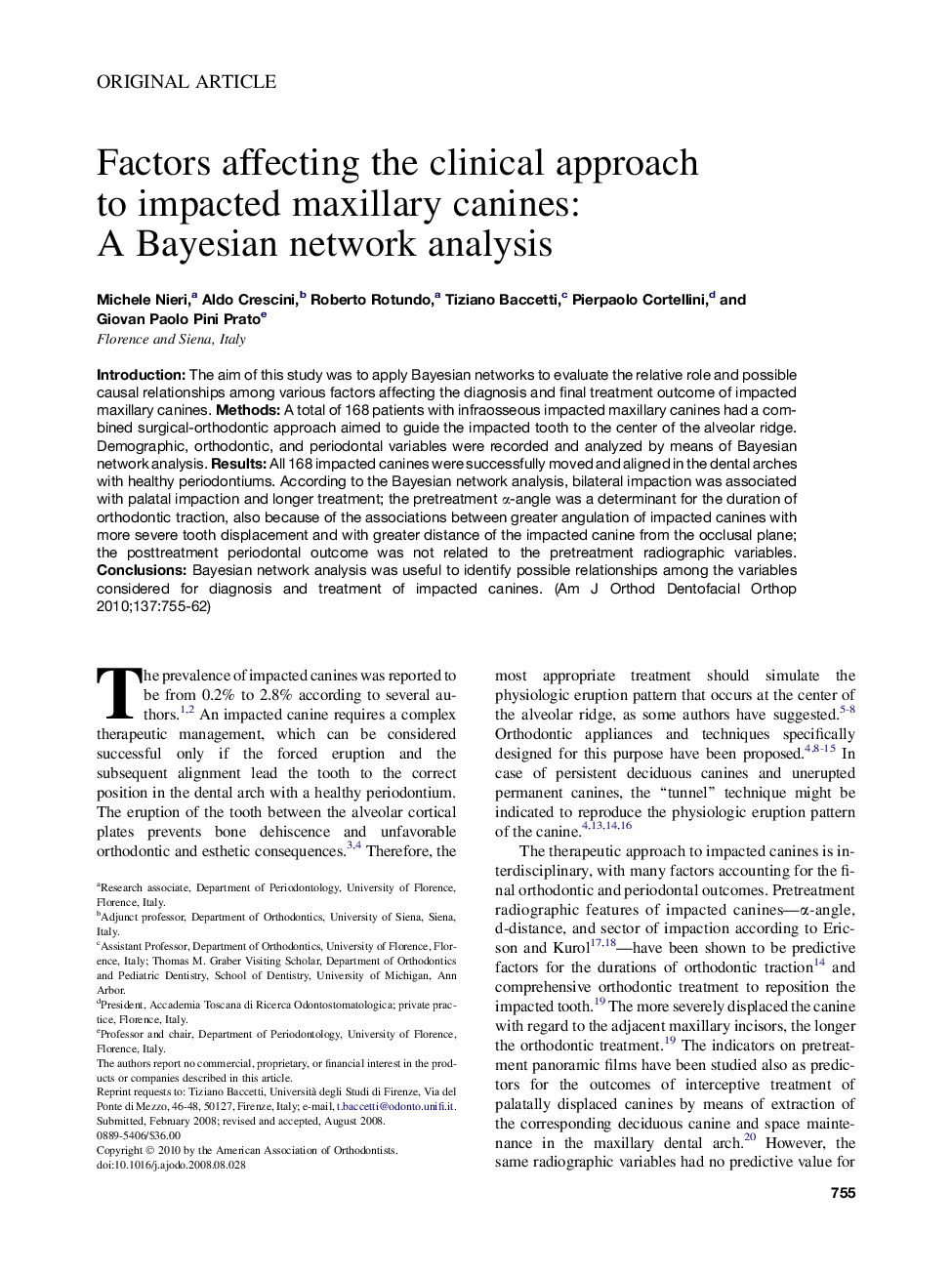| Article ID | Journal | Published Year | Pages | File Type |
|---|---|---|---|---|
| 3117609 | American Journal of Orthodontics and Dentofacial Orthopedics | 2010 | 8 Pages |
IntroductionThe aim of this study was to apply Bayesian networks to evaluate the relative role and possible causal relationships among various factors affecting the diagnosis and final treatment outcome of impacted maxillary canines.MethodsA total of 168 patients with infraosseous impacted maxillary canines had a combined surgical-orthodontic approach aimed to guide the impacted tooth to the center of the alveolar ridge. Demographic, orthodontic, and periodontal variables were recorded and analyzed by means of Bayesian network analysis.ResultsAll 168 impacted canines were successfully moved and aligned in the dental arches with healthy periodontiums. According to the Bayesian network analysis, bilateral impaction was associated with palatal impaction and longer treatment; the pretreatment α-angle was a determinant for the duration of orthodontic traction, also because of the associations between greater angulation of impacted canines with more severe tooth displacement and with greater distance of the impacted canine from the occlusal plane; the posttreatment periodontal outcome was not related to the pretreatment radiographic variables.ConclusionsBayesian network analysis was useful to identify possible relationships among the variables considered for diagnosis and treatment of impacted canines.
